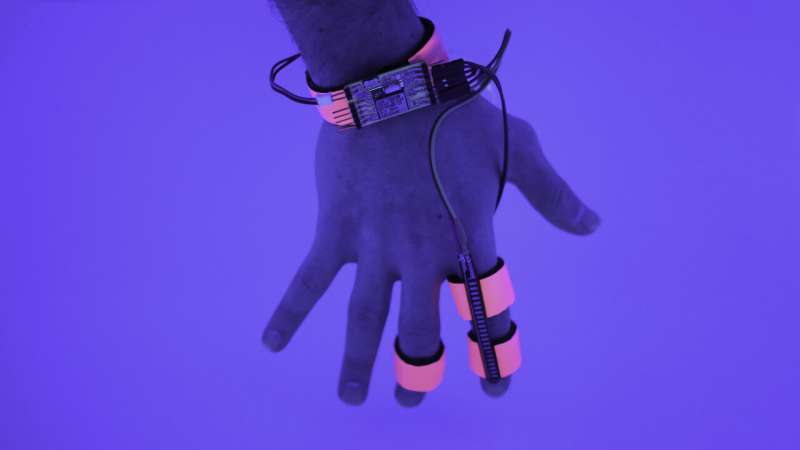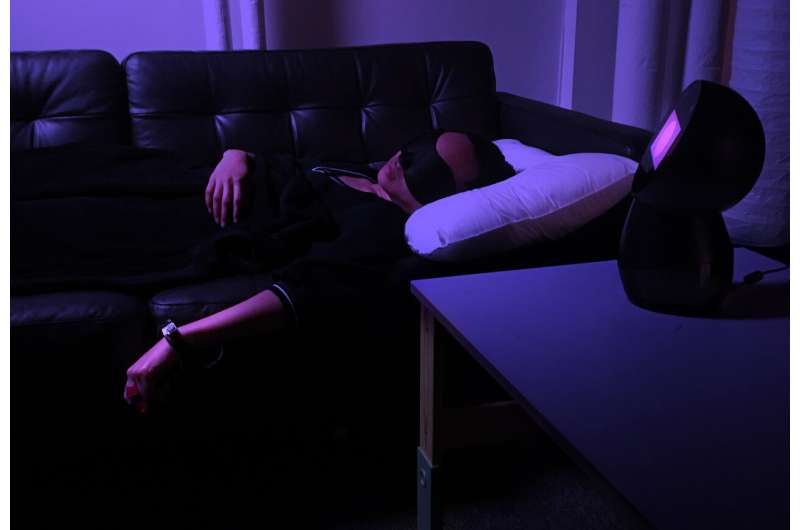April 17, 2020 report
A lab that reads—and writes—our dreams

The world's great thinkers probably lost a lot of sleep dwelling on the mysteries of dreams. Mathematician and philosopher Rene Descarte was so spellbound by the vivid imagery of dreaming that he questioned the existence of reality. "Whatever I have accepted until now as most true has come to me through my senses," he said "But occasionally I have found that they have deceived me [in dreams], and it is unwise to trust completely those who have deceived us even once."
The 4th century Chinese philosopher Zhuangzi recounted a dream in an essay "Butterfly Dream": "Now I do not know whether I was then a man dreaming I was a butterfly, or whether I am now a butterfly, dreaming I am a man."
And Eastern philosopher Chogyal Mankhai Norbu concluded that all of our sensations—taste, smell, sight, hearing—are merely elements of a larger dream.
Today researchers at MIT are also fascinated with dreams. They devised a sleep laboratory with subjects fitted with a glovelike device that allows researchers to communicate with them as they slip into hypnogogia—a fleeting semi-conscious state between wakefulness and sleep. The device, called Dormio, tracks heart rate, muscle tone and skin conductance. It alerts researchers when subjects dip into early stages of dreaming.
"Dreaming is really just thinking at night," says Adam Horowitz, an MIT Dream Lab researcher. "When you go inside, you come out different in the morning. But we have not been asking questions about the experience of that transformation of information or the thoughts that guide it."
The Dormio device plays a word or other audio sound as subjects drift into a transitional sleep stage. Researchers have found that subjects recall those words, sounds and other subjects related to the stimuli in interviews following their sleep sessions.
Horowitz believes Dormio can ultimately contribute to enhanced creativity and memory improvement as researchers design advanced techniques to capture greater detail from hypnogogic states. It opens the door to interactivity between the "real" world and a stage of semi-conscious fantasy and imagery that until now has remained essentially unharnessed by outside actors.
Some see Dormio as a 21st century upgrade to the Steel Ball device used in early exploration of dreams by such notable figures as Thomas Edison, Edgar Allen Poe and Salvadore Dali. They grasped the ball as they fell into sleep and, when the ball rolled from their hands and woke them, were able to better recall their dreams. Edison, Poe and Dali may not have known the term hypnogogia, but they likely well understood and perhaps utilized what MIT researchers today describe as "phenomenological unpredictability, distorted perception of space and time, loss of sense of self, and spontaneous, fluid idea association."
Another MIT researcher is exploring the impact of smell on dream research. Judith Amores designed a scent diffuser that dispenses odors as subjects slip into sleep. In follow-up interviews, subjects report memories associated with the smells.
Amores hopes her efforts may lead to relief for subjects suffering from trauma and PTSD. By triggering scents with positive associations during nightmares, Amores believes,"you can heal without being fully conscious."
MIT is providing Dormio technology as open source. Circuit board designs are also available online for free.
Dream analysis has a rich history. Freud searched for psycho-sexual explanations for the phenomena of sleep. He theorized dreams allow for safe expression of repressed thoughts. In the Sixties, Stanford researcher William Dement, known as "the father of sleep medicine," was the first to link rapid eye movement and the onset of dreams.
A 1998 study published in Science examined how the brain coordinates emotions, senses and long-term memory during vivid dream states, challenging theorists who suggested dreams are merely random fragments of memory saved or expelled as the brain conducts housecleaning.

And CCNY's Professor John Antrobus studied sleep for decades. He demonstrated that dreams are linked to our anxieties, but acknowledges some answers remain elusive.
"The brain is an interpretive organ, and when regions are less connected as they are in sleep, we get bizarre narratives," Antrobus said. "But its purpose? For that we have to ask what is the purpose of thought. We can't answer one without answering the other."
But perhaps the most intriguing assessment comes from Nick Bostrom, a Swedish philosopher at Oxford University. His conclusion: We all are likely living in a digital dream imagined by a computer.
Which leads us to ask: If we are all just a dream, then what are our dreams?
More information: www.media.mit.edu/projects/sle … creativity/overview/
© 2020 Science X Network





















